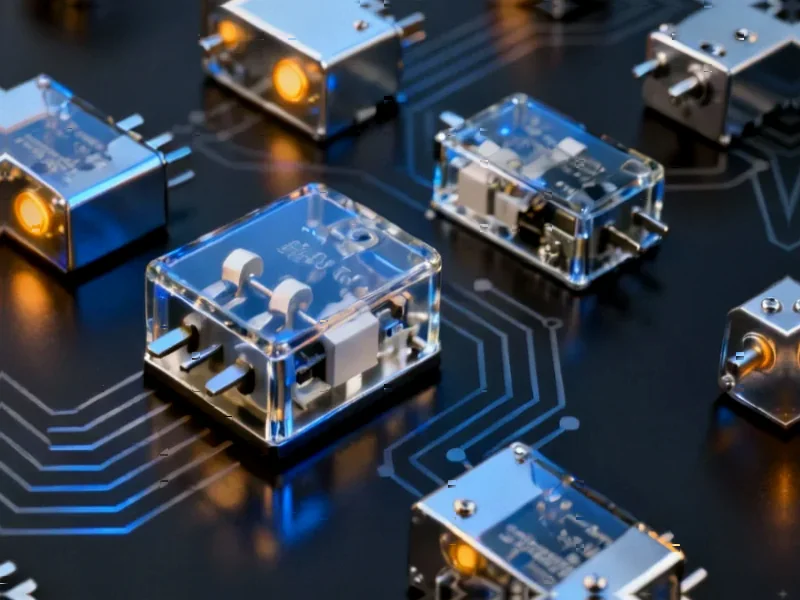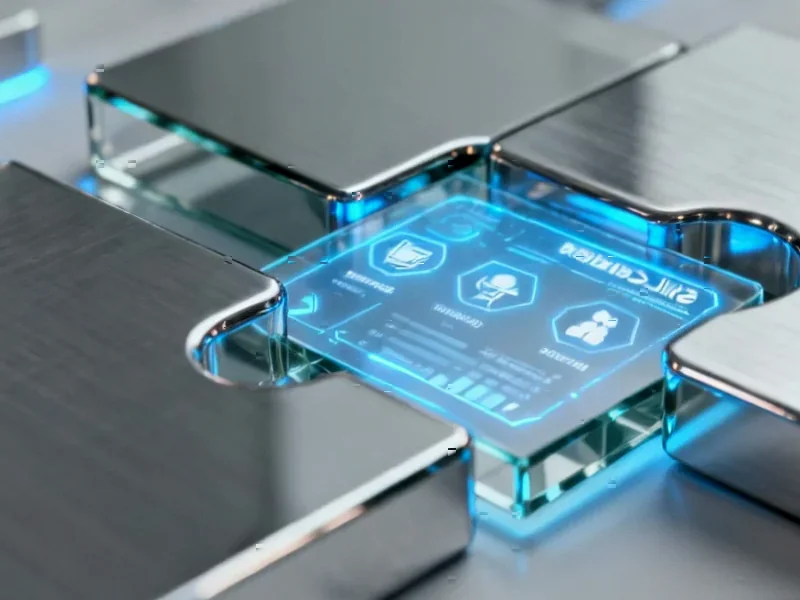Space is getting crowded, dangerous, and frankly, messy. With over 130 million pieces of debris now orbiting Earth—everything from spent rocket stages to paint chips traveling at hypersonic speeds—the satellite industry faces what one CEO calls an “invisible threat” that could cripple our increasingly space-dependent civilization. Now, a breakthrough in spacecraft protection technology from Atomic-6 might finally give satellite operators the defensive edge they desperately need.
Table of Contents
- The Whipple Shield’s Long Reign
- A Polymer Revolution in Orbit
- The Radio Transparency Game-Changer
- Market Timing and Geopolitical Realities
- Competitive Landscape and Adoption Challenges
- The Human Factor in Orbital Safety
- Looking Beyond Earth Orbit
- The Road Ahead
- Related Articles You May Find Interesting
The Whipple Shield’s Long Reign
For nearly eight decades, spacecraft protection has relied on a technology that predates the space race itself. The Whipple Shield, developed by astronomer Fred Whipple in the 1940s, has been the gold standard since the Apollo missions. The system works on a simple principle: layers of aluminum sheeting separated by gaps or foam polymer that gradually dissipate the energy of incoming projectiles. It’s effective, but as space industry veteran Dr. Maria Rodriguez of the Space Security Institute tells me, “We’ve been fighting 21st century threats with mid-20th century technology.”
The Whipple Shield’s limitations have become increasingly apparent in today’s crowded orbital environment. “The aluminum construction tends to create additional debris when struck, which is frankly counterproductive in an already cluttered space environment,” Rodriguez explains. “Plus, the weight and complexity make it expensive to deploy across entire satellite constellations.”
A Polymer Revolution in Orbit
Atomic-6’s Space Armor represents what appears to be the first genuine leap forward in spacecraft protection technology in generations. Developed over 18 months, the proprietary polymer tiles address the Whipple Shield’s fundamental limitations while adding capabilities that could transform satellite design. The self-adhesive tiles come in standard one-foot squares or custom sizes up to 3.3 feet square, making them remarkably versatile for different spacecraft configurations.
What’s particularly impressive is the performance claims: the armor can handle impacts exceeding 4.35 miles per second with significantly less debris production than traditional systems. The company offers variants ranging from lightweight protection against 3mm debris to heavy-duty versions handling objects up to 12.5mm wide. Given that most space debris measures smaller than a paint chip but travels at relative speeds that turn them into hypersonic projectiles, this granular approach to protection makes practical sense.
The Radio Transparency Game-Changer
Perhaps the most revolutionary aspect of Space Armor isn’t its impact resistance but its radio transparency. Traditional Whipple Shields act as Faraday cages, blocking radio signals and requiring complex engineering workarounds to protect communication systems. Atomic-6’s solution allows the armor to double as radomes—protective covers for radar and communication antennae that don’t sacrifice functionality for safety.
“This is genuinely transformative,” says satellite communications expert James Chen of Aerospace Analytics. “Previously, protecting sensitive antenna arrays meant either leaving them exposed or designing complex shielding solutions that added weight and reduced efficiency. Now you can essentially wrap your entire communications package in protective armor that doesn’t interfere with signal transmission.”
The implications extend beyond mere convenience. As Chen notes, “For military and intelligence satellites where communications security is paramount, this technology could mean the difference between mission success and catastrophic failure during anti-satellite attacks or debris collisions.”
Market Timing and Geopolitical Realities
Atomic-6’s timing couldn’t be better—or more concerning. The space debris problem has evolved from theoretical concern to immediate threat. Recent events like Russia’s anti-satellite missile test in 2021, which created thousands of new debris fragments, highlighted the vulnerability of orbital infrastructure. Meanwhile, the rapid deployment of mega-constellations like SpaceX’s Starlink and Amazon’s Project Kuiper means thousands of new satellites are entering an increasingly hazardous environment.
“We’re seeing a perfect storm of factors driving demand for better space protection,” observes industry analyst Sarah Goldberg of SpaceTech Partners. “Between the commercial space boom, growing military interest in space dominance, and legitimate concerns about cascading collisions, the market for advanced spacecraft protection could exceed $5 billion annually within five years.”
Goldberg points to several converging trends: “The same companies launching massive satellite constellations are also driving down launch costs, which makes adding protective systems more economically feasible. Meanwhile, insurance companies are starting to demand better protection for their multi-million dollar orbital assets.”
Competitive Landscape and Adoption Challenges
While Atomic-6 appears to have first-mover advantage with their polymer solution, they’re not alone in pursuing next-generation space protection. Established aerospace giants like Lockheed Martin and Northrop Grumman have their own research programs, while startups like SpaceShield Technologies are exploring metamaterials and self-healing composites.
The adoption challenge, however, remains significant. “Space is the ultimate conservative industry,” notes Rodriguez. “Every additional kilogram of protection means less payload capacity or higher fuel costs. The weight savings Atomic-6 claims will be crucial, but they’ll need to demonstrate reliability through extensive testing and potentially years of in-orbit performance data.”
Regulatory pressure might accelerate adoption. As space debris mitigation becomes a higher priority for agencies like the FCC and international bodies, requirements for better protection could become mandatory rather than optional. We’ve already seen the beginnings of this with the FCC’s recent space sustainability rules.
The Human Factor in Orbital Safety
Beyond satellite protection, Atomic-6’s technology has implications for human spaceflight. As CEO Trevor Smith emphasized, protecting “space stations and people in orbit” represents a critical application. With the International Space Station regularly performing debris avoidance maneuvers and commercial space stations like Axiom’s planned facility coming online, the need for reliable protection becomes even more urgent when human lives are at stake.
The psychological impact shouldn’t be underestimated either. “Knowing there’s effective armor between you and the hypersonic debris outside changes the calculus for long-duration missions,” says former astronaut Dr. Michael Johnson. “It’s one less thing to worry about in an environment where there are already plenty of things to worry about.”
Looking Beyond Earth Orbit
The applications for Space Armor extend beyond near-Earth operations. As we look toward lunar missions, Mars exploration, and deeper space ventures, protection against micrometeorites and other hazards becomes increasingly important. The radio transparency feature could prove particularly valuable for deep space communication systems where signal strength is already marginal.
Interestingly, the same properties that make Space Armor effective against debris might also make it useful for thermal management, radiation shielding, and even structural applications. The company’s decision to offer both radio-transparent and radio-opaque versions suggests they’re thinking broadly about potential applications.
The Road Ahead
While Atomic-6’s technology shows tremendous promise, the real test will come with deployment and validation. The space industry moves cautiously for good reason—failure in orbit is spectacularly expensive and very public. The company will need to demonstrate not just laboratory performance but real-world reliability across varying orbital conditions and threat scenarios.
Still, the fundamental approach represents the kind of innovation the industry desperately needs. As we continue to fill orbit with everything from internet satellites to national security assets, finding ways to protect them without creating more problems becomes increasingly critical. Atomic-6’s Space Armor might just be the first step toward making the orbital environment sustainable for the long term—or at least making it less like a cosmic shooting gallery.
The bigger picture is clear: as space becomes more contested, crowded, and commercially vital, the companies that solve the fundamental problems of safety and sustainability will shape the next era of space development. Atomic-6’s breakthrough suggests that sometimes, the most important innovations aren’t about going faster or farther, but about surviving the journey.



